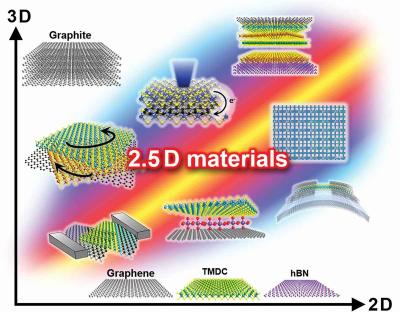Japan's Ministry of Education, Culture, Sports, Science and Technology has launched a collaborative project to develop 2.5D materials. The project, titled "Science of 2.5 Dimensional Materials: Paradigm Shift of Materials Science Toward Future Social Innovation" includes 40 researchers in Japan, led by Prof. Ago Hiroki at Kyushu University.

2.5D materials are made by stacking different 2D materials artificially by using advanced transfer techniques. These new materials are not limited by lattice constant or composition, and it is possible to control the material layers, and their stacking angle. These new materials could unlock new breakthroughs in materials science.
A good example of a 2.5D material is bilayer graphene. While monolayer graphene has no band gap, AB-stacked bilayer graphene shows a band gap in the presence of a vertical electric field. By controlling the stacking angle, one can change the conductivity. A stacking angle of 1.1° for example, shows a superconducting state at â1 K.